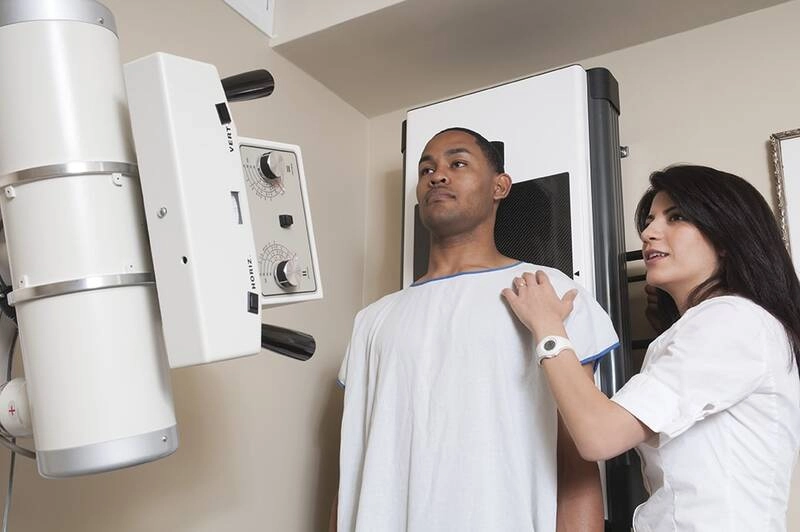An appointment anywhere new is a bit unsettling, no matter where or who it is you are going to see; a new dentist, hairstylist, or your local Anchorage chiropractor at Better Health Alaska.
This is even more so if you know next to nothing about what a chiropractor actually does.
You probably googled what chiropractors do and seen some pretty shocking videos. You might have read some half-truths or even flat out myths about what a chiropractor does, doesn’t do, and what you should expect.
Before Your Appointment
If you have already seen other doctors, chiropractors, or other health care professionals and you have any medical records regarding treatments performed, x-rays, CT scans, MRI’s or other records that relate to the problem you are having now, be sure to collect these and bring them with you.
Be prepared to give the chiropractor your full medical history. If you need to write things down, be sure to bring that list.
If you plan to use insurance, bring any ID cards or other paperwork that you might need. If you aren’t sure about your insurance, you might want to call them and ask about coverage or deductibles. Your chiropractor’s staff might be able to help you in this area.
Now that you have everything ready to go- let’s look at the top tips for how to prepare and what to expect for your first visit.
Tip #1: Arrive Early
Like all medical office visits, there is always a little paperwork to complete, no matter how well in advance you have tried to prepare. New patient forms, insurance forms, contact forms, etc. Since most offices work on an appointment basis, it is a common courtesy to arrive at least 15 minutes early so you can complete any necessary paperwork and still be on time for your actual appointment.
If for some reason you can see that you won’t make it early (or even on time) please call the office and let them know so they can make whatever changes they need to in order to keep the flow of patients moving so no one is inconvenienced.
Tip #2: Dress for Comfort

Unless something unexpected happens, you should expect that your visit will include your first chiropractic adjustment. This means lying on a table, sometimes face up, sometimes face down, and often in a variety of other positions as well, including on your side.
While your Anchorage chiropractors rarely need to remove clothing, it is sometimes necessary for imaging, such as x-rays.
If you have any prosthetic devices (such as a foot or leg) or if you wear any medical appliances (such as a colostomy bag) please tell your chiropractor or the nurse in advance.
What to wear to a chiropractic appointment:
Ladies: High-heeled shoes are not appropriate. You can remove them, of course, or wear tennis shoes or flats. You will feel more comfortable in loose-fitting slacks and a T-shirt, not a dress. Shorts are fine, but tight-fitting jeans will be very uncomfortable. We are often asked if wearing a bra to the chiropractors is necessary. Do what makes you feel comfortable, but chances are that you will feel better wearing a bra or sports bra. If you wear an underwire bra, you might need to remove it for x-rays. Most women find that a sports bra, tennis shoes, and loose-fitting athletic clothing are the most comfortable choice.
Gentlemen: Any tight-fitting or constrictive attire will make your visit uncomfortable at best. This means that ties, belts, suspenders, and dress shoes should probably be left at the office or be prepared to remove them. The same is true with very tight jeans. Most men find that tennis shoes and loose-fitting athletic clothing, such as sweatpants and t-shirts, are the most comfortable.
Tip #3: Be Ready to Consult Your Anchorage Chiropractor
While your Anchorage chiropractor is a health care expert, he isn’t a mind reader. Be prepared to tell the doctor everything you can about your pain. How it started, how long you have had it when it happens, what seems to make the pain worse or better, and what you have been taking to ease your pain if anything.
Don’t be shy or ashamed to tell the doctor the truth. Chances are pretty good that you won’t shock him, and they have heard similar stories before. You can’t get the full benefit of treatment if the chiropractor isn’t fully aware of your problem and your lifestyle.
Tip #4: Be Ready for Your Exam Time
What will the chiropractor do on the first visit?

Don’t be surprised to find that your chiropractor is very much like other doctors in that they will order tests (usually x-rays or MRI’s), and a physical exam. The doctor might ask you to perform certain physical tasks, such as touching the floor or walking across the room and back. This is all part of the evaluation process.
Tip #5: Expect an Unexpected Treat
Some chiropractors like their patients to have a massage before they do adjustments. Others prefer the massage afterwards. This will depend on the chiropractor and your unique circumstances, but most people don’t expect a lovely, relaxing massage from their chiropractic visit. You will learn to love this aspect of your future visits and might find yourself returning just for massage after your other treatments have ended!
Tip #6: Prepare for Your Chiropractic Adjustment in Anchorage

Do chiropractors adjust on the first visit? Yes, they will.
Don’t let those videos you might have seen frighten you. Adjustments do not hurt and afterward, they feel so good, you might wonder why you waited so long.
If you hear any popping or cracking noises, don’t be concerned. Nothing is breaking or actually cracking into pieces. This is simply trapped air being released from between the joints or discs, similar to the noises you hear when opening a soda bottle.
For a full explanation about what an adjustment feels like, this is a good article to read about it.
Tip #7: Don’t Forget to Ask
Chances are that your chiropractor will make a treatment plan for you. Be certain that you understand and ask any questions before you leave. You should also make your next appointment before you go and make a note of it in your phone, so you won’t forget!
Your First Chiropractor Visit Explained
To help you feel prepared and comfortable from the moment you step foot in your chiropractor’s office, we put together this guide detailing everything you need to know about your first chiropractic visit.
Step One: Intake

Of course, not every chiropractor or physical therapist will necessarily do everything the same as the next. But in general, you’ll start your chiropractic experience by going through a standard intake process.
This is more or less the same as the intake process at any other medical appointment. You’ll be given a questionnaire to fill out, which will ask questions about your health history. Your chiropractor will likely want to know about other treatments you are undergoing and any illnesses or conditions that might be affecting your well-being.
Even though chiropractors deal mostly with the spine, it’s important that your chiropractor has a good sense of your overall health. If you think it might be helpful, bring a list with the names of the medications you currently take and any conditions you’ve been diagnosed with.
During intake, you’ll explain the symptoms that brought you to the chiropractor’s office. You might be asked to indicate on a diagram of the human body where you’re experiencing pain or discomfort. You’ll be prompted to describe the nature of your symptoms (is it a sudden searing pain or a constant dull ache?), when you first noticed the problem, and what activities or circumstances cause the pain to worsen.
The intake forms are typically completed at the beginning of your first visit to the office. However, some practitioners may call you on the phone for an initial consultation before you come to the clinic in person. Others may ask you to submit an overview of your medical history online before you arrive for your appointment.
All of this preliminary information is designed to help the chiropractor understand what’s going on in your body and begin to isolate the underlying cause of your pain.
Step Two: Physical Exam

After the intake form, you’ll undergo a physical exam. This will often start with a generalized exam that’s more or less the same as visiting a general practitioner. The chiropractor, physical rehabilitation therapist, or assistant will take your blood pressure, test your reflexes, listen to your respiration, and measure your pulse.
Following these basic assessments, the exam will move on to your specific chiropractic and orthopedic concerns. This specialized portion of the exam might include range of motion tests, tests of muscular strength, and posture analysis. If the chiropractor believes it is warranted based on your symptoms, this initial exam may include an X-ray of your back or neck.
All of these tests are very common during an initial visit to a chiropractor. In rarer cases, the chiropractor may recommend an MRI scan or other laboratory tests to identify issues that will be relevant to your chiropractic treatment. These tests may happen on-site at the chiropractic clinic, or the chiropractor may refer you to another facility.
The information gathered during this stage will help your chiropractor come up with a personalized treatment plan.
Step Three: Creating A Treatment Plan
The goal of any chiropractor or physical therapist is to provide relief from pain and discomfort quickly and responsibly. This means creating a treatment plan that requires the minimum number of visits and using techniques that are as minimally invasive as possible while still being effective.
The techniques for treating a chiropractic concern vary widely based on the circumstances and health goals of each individual patient. For example, someone who is seeking chiropractic treatment for persistent migraines might have the goal of sleeping through the night without waking up from pain.
Another patient may have the goal of strengthening their back muscles to avoid another injury like the one that brought them into the chiropractor’s office in the first place. Still another patient may consider their treatment successful once they are able to regain their full range of motion and return to hiking, swimming, rock climbing, or another physical activity that they enjoy.
Because creating a treatment plan is a very personalized process, it’s important that you have a chiropractor that makes you feel at ease. This is key as you work with your chiropractor to discuss your health goals and your progress throughout the course of treatment.
Types of Treatments
There are a number of methods and techniques that a chiropractor might include in your treatment plan. Here are some of the most common.
a) Chiropractic adjustments
This is the form of treatment most frequently provided by chiropractors. There are different types of adjustment techniques that your chiropractor may use.
These techniques fall into two broad categories. The first one is spinal manipulation, also known as a high-velocity, low-amplitude (HVLA) thrust. This is what most people think of as a chiropractic adjustment: The chiropractor will have the patient position their body in a particular way, and then apply sudden force to a joint or vertebra. Adjustments often result in an audible “pop” as tension is released on the joint.
The other category is spinal mobilization, sometimes known as a low-force chiropractic technique. For some patients, the HVLA treatment method may exacerbate the patient’s injury or underlying condition. If spinal manipulation is painful or ineffective, the chiropractor may opt for this gentler method. Spinal mobilization relies on slow movement and low amounts of pressure to restore or enhance the mobility of joints.
b) Electrical stimulation
Electrotherapy is the process of applying gentle electrical stimulation to specific areas of the body. This treatment has been shown to improve circulation, repair damaged tissue, and even promote bone growth.
A chiropractor may recommend electrotherapy if standard chiropractic adjustments are not proving effective in reducing the patient’s pain. In addition to chronic back pain, it is sometimes used to treat fibromyalgia, diabetic nerve pain, and migraine headaches.
c) Massage therapy

Massage therapy can be an ideal form of treatment for patients who are experiencing chronic muscle tension and back pain. This is known as one of the safest forms of therapy, as it carries very little risk even for patients who are not able to undergo other types of chiropractic treatment.
Studies indicate that massage therapy is effective in improving blood circulation and leading to increased levels of endorphins. This type of treatment is utilized to relax tense muscles, improving range of motion and reducing the effects of insomnia.
Daniel C. Cherkin, Ph.D., is the senior scientific investigator with the Center for Health Studies at Group Health Cooperative in Seattle. Cherkin has explained that massage therapy “does help a significant chunk of people who have not benefited from other treatments.”
d) Heat and cold therapy
For many types of injuries, the controlled application of heat or cold can be useful in managing pain and promoting rapid recovery.
Immediately after an injury occurs, a chiropractor will likely recommend using ice to mitigate swelling at the site of the injury. “Cold treatment can speed recovery,” notes Dr. Nayan Patel, a spine specialist at the Texas Back Institute. “For example, ice can cause a restriction of blood flow to an injury that can prevent swelling and potentially inflammation.”
For older injuries or chronic pain, a chiropractor might first numb the affected area with an ice pack, and then apply heat in the form of a heat wrap, hot water bottle, or heating pad. This alternating application of cold and heat can be used to dilate blood vessels, increase circulation, and decrease healing time.
While ice has been used for generations as an anti-inflammatory treatment, a new method called Whole Body Cryotherapy (WBC) takes cold therapy to the next level. In a WBC treatment, patients are exposed to temperatures as low as -256 degrees Fahrenheit for between one and three minutes. Preliminary research indicates that WBC can be effective in treating autoimmune and inflammatory disorders, including those that cause chronic back pain.
Step Four: Follow-Up Treatments
Treatment plans vary widely. Depending on your condition or your injury, you might need to see a chiropractor only a few times a year, or you may need to come in several times a week until you see improvement. Some patients may need to come in for a simple adjustment whenever their symptoms reappear with no set time schedule for follow-ups.
For patients with a recent injury, a chiropractor or physical therapist will often recommend coming in two or three times a week. These frequent visits might continue for a month or more. Over time, as the injury heals, the chiropractor might recommend gradually tapering off the number of visits down to once each week or once every other week until the patient can be released from chiropractic care.
One of the most important things that a chiropractor can do is provide you with suggestions on how to improve your health and speed your recovery while you’re away from the clinic. A good chiropractor will teach you simple stretches and exercises that can greatly improve your strength and range of motion after an injury. In some cases, a chiropractor will also recommend nutritional or lifestyle changes that can help bolster your chiropractic health.
Although it can be easy to ignore your chiropractor’s advice, this “homework” between office visits is key to managing pain and facilitating a speedy, complication-free recovery.
After Your Appointment
Your chiropractor will probably explain to you that feeling a bit sore for a day or two afterward is completely normal, especially if you were very nervous during your visit.
Other common side effects include:
-
- Flu-like symptoms such as a runny nose or a feeling of fatigue. About 20% of patients report these symptoms. This is due to what is called toxic release. Adjustments can cause the body to remove a buildup of toxins, which means that the treatment is working well.
Nausea. For a few people, adjustments, especially neck adjustments, can leave you feeling nauseous for a day or two. Not continuously, but off and on for 48-72 hours. This doesn’t mean that your body is rejecting the treatment, but it is simply a side-effect some people seem to experience.
Headaches. This is another common side effect. Most people opt for a nap or an ice pack to stop the headache. They are rarely severe enough to consider over-the-counter pain medication and they are usually very short-lived.
Dizziness or Brain Fog. Adjustments can cause some people to feel what is known as brain fog or as if you are walking through a dream. This, along with a dizzy feeling, is also normal and can often be resolved by drinking a few glasses of water over the next few hours and taking a short nap.
While the above side effects can happen, don’t be alarmed if they don’t happen to you. If you have any concerns, call the chiropractors office.
You have nothing to fear at the chiropractor’s office and you will come to look forward to your next visit!
The Truth about Chiropractic Care
Before we talk about your appointment, let’s dispel a few myths about chiropractors and what they do so you can calm any fears your might have.
Chiropractors are doctors, who are specialists in the musculoskeletal aspect of the body. This means anything to do with the bones, muscles, tendons, joints, and other connective tissues are their specialty.
Chiropractors are health care professionals who believe in holistic treatments, which means they look for the root cause of the problem and treat the entire body, and don’t just hand you some pills to treat the symptoms.

They practice non-surgical, non-invasive, drug-free treatment methods because they know that, in many cases, if you give the body what it needs, it can heal itself.

If you found this article helpful, please feel free to share it with others.
At Better Health Alaska in Anchorage, we want everyone to live their best, pain-free life. No matter what type of pain you are having, whether it’s back pain, neck pain, frequent headaches or carpal tunnel, we want to help. Call us for a same day appointment or click here to make an appointment online.










